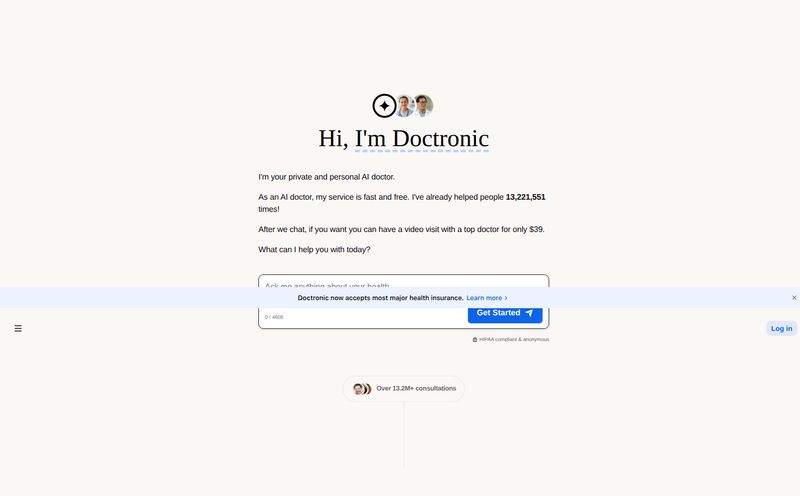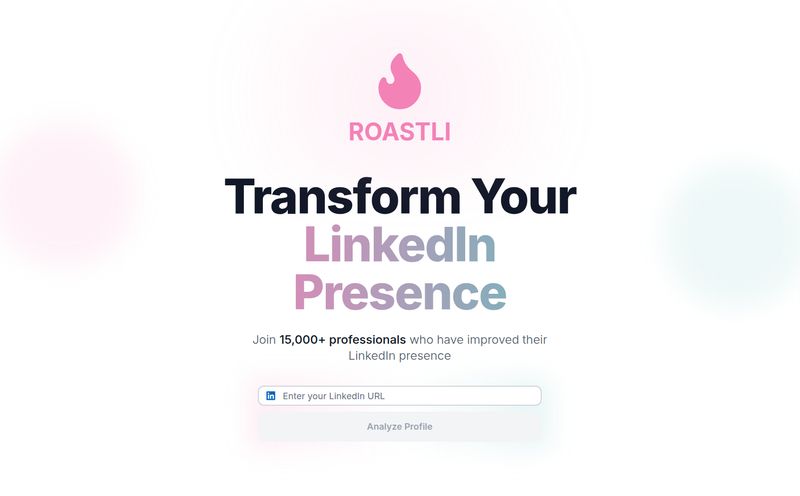The world of Augmented Reality has been a bit of a rollercoaster. We’ve been promised a heads-up display for our lives for years, but what we've mostly gotten are bulky, expensive headsets or glasses that are, well, a little underwhelming. The big players like Apple and Meta are building these incredible, polished experiences, but they’re also building towering walled gardens. You play by their rules, in their sandbox, with their tools. And that’s fine, for some. But what about the rest of us? The tinkerers, the builders, the people who see a new piece of tech and immediately think, “I wonder if I can make it do this…?”
That’s where I think Brilliant Labs comes in. I’ve been watching them for a while, and their new device, called Frame, feels different. It’s not trying to be the slickest, most consumer-ready product on day one. Instead, it feels like an invitation. A challenge, even. And at $349, it’s a challenge a lot more of us can actually afford to accept.
So, What Exactly is This Thing?
Imagine the love child of a pair of classic, round-rimmed glasses and a Raspberry Pi. That's Frame. At its heart, it’s a pair of pocket-sized, open-source AR glasses powered by generative AI. That’s a lot of buzzwords, I know, so let's break it down. Open-source means the hardware and software blueprints are available to everyone. You can see how it works, modify it, and build upon it without asking for permission. This is HUGE. It’s a philosophy that built the internet and so much of the software we depend on today.
The glasses pair with your phone and use a multimodal AI called Noa, which can both see and hear, to interact with the world around you. This isn’t just about getting your notifications in front of your eye. This is about giving you an AI-powered co-pilot for reality.

Visit Brilliant Labs
It’s designed specifically for what Brilliant Labs calls “imaginative hackers.” A term I absolutly love. It's not for passively consuming media. It's for actively creating, experimenting, and building new ways to interface with information and the physical world. Think real-time language translation appearing in your vision, identifying plants on a hike, or even building a real-life version of the “Hotdog / Not Hotdog” app from Silicon Valley (which, by the way, is one of their actual demos).
The Onboard AI is the Real Magic
Let's get into the AI because that's the core of the experience. Frame integrates generative AI to do some pretty wild stuff. Using your phone as the main processor, it can take what its camera sees and what its microphone hears and give you instant analysis.
Some of the out-of-the-box applications include:
- Visual Search: Look at a landmark and ask what it is. The AI will identify it and feed you the information.
- Live Translation: Have text translated and displayed directly in your field of view.
- Nutritional Information: Look at your lunch and get a rough estimate of the calories. Kinda scary, kinda cool.
This is where the potential really starts to spark the imagination. Because it's open, developers can create their own custom AI tools. You could make an app that helps you identify bird species by sight, one that guides you through a complex assembly process by highlighting parts, or even a game that overlays digital objects onto the real world. The possibilities are genuinely cooked up by the community, not a corporate roadmap.
Why Open Source is the Secret Sauce for AR
I’ve been in the tech and SEO game long enough to see platforms rise and fall. The ones that last are often the ones that empower their users. Closed ecosystems are like a fancy, all-inclusive resort. It's beautiful and everything works perfectly, but you can't leave the grounds and everything costs a premium. An open-source project like Frame is more like being given a plot of land and a really good set of tools. It's a bit messier, you have to build things yourself, but the freedom is unparalleled. You can build whatever you want.
The community, primarily organized on Discord, is the lifeblood here. It's a place where people share what they've built, help each other with code, and dream up new uses for the hardware. When you buy Frame, you’re not just buying a gadget; you’re getting a membership card to a club of curious builders. That, to me, is incredibly valuable.
Getting Real: The Good, The Bad, and The Nerdy
Okay, let's ground ourselves. No product is perfect, especially not a first-gen device aimed at hackers. I appreciate that Brilliant Labs is transparent about the limitations.
The Bright Side
The biggest pro is the one I keep coming back to: the open-source ecosystem. It fosters a type of innovation you just don't get elsewhere. The design is also a huge plus. They’re light, compact, and look more like stylish glasses than a piece of tech strapped to your head. They are genuinely pocket-sized. The potential applications, thanks to the creative community and the built-in generative AI, are pretty much limitless. It's a playground for the curious.
The Reality Check
Now for the trade-offs. The field of view (FOV) is limited to about 20 degrees. This is probably the biggest hurdle for mass adoption. It’s not an immersive screen that fills your vision. Think of it more like a small, translucent sticky note floating in front of you. It's a heads-up-display, not a virtual reality machine. For the intended purpose—quick, contextual info—it works. But don't expect to be watching movies on this thing.
There are also no built-in speakers. You’ll need to use your phone's audio or your own earbuds, which makes sense for keeping the frames light and the cost down, but it's an extra step. The language support for character-based scripts (like Mandarin or Japanese) is still limited, and for international buyers, it's good to know that taxes and duties aren't collected at purchase, so you might have an extra bill when it arrives. These aren’t deal-breakers, but you need to go in with your eyes open.
Who Should Actually Buy This? (And What’s the Price?)
So, is Frame for you? If you're a developer, a creative coder, an artist who likes to mess with tech, or just a deeply curious person who wants to be on the ground floor of a new platform, then yes. A resounding yes. If you're looking for a polished consumer device to replace your smartphone, this isn't it. Not yet, anyway.
The price is what makes it so compelling. The Brilliant Labs Frame costs $349.00 USD. For a piece of hardware this unique, that feels more than fair. It's in the same ballpark as a decent smartwatch or a VR headset, but it offers something completely different. It's a tool for creation.
They also partner with SmartBuyGlasses to offer prescription lens inserts, which is a thoughtful touch for those of us who need them. You can check out the full details and place an order on their official site.
Check Pricing on the Brilliant Labs WebsiteMy Final Thoughts on a Different Kind of Future
I get excited about products like Frame. Not because they are perfect, but because they are promising. It represents a different path for personal technology. A path that’s more collaborative, more creative, and frankly, more interesting. It’s a bet that the next big breakthrough in AR won’t come from a secretive R&D lab in Cupertino, but from a student in their dorm room or a hobbyist in their garage.
Is it a bit raw? Sure. Does it have limitations? Definitly. But it's also a powerful, accessible, and fun development kit for your face. And in a world of increasingly locked-down tech, that feels like a breath of fresh air.
Frequently Asked Questions
Can I use Brilliant Labs Frame for just notifications like other smart glasses?
While technically possible if someone were to build that app, it's not their primary function. Frame is designed for active, AI-driven interactions with the world, not passive notification display. It's more of an 'on-demand' information tool.
Do I absolutely need to be a programmer to use Frame?
No, you don't. It comes with a suite of AI capabilities right out of the box that you can control with your voice. However, to get the absolute most out of it and build custom applications, some programming knowledge would be a huge advantage.
What's the battery life like on the Frame glasses?
The specifics of battery life will heavily depend on usage, as the glasses work in tandem with your smartphone which does the heavy lifting. The included charging case, named 'Mister Power', will provide multiple recharges throughout the day. Think of it like using wireless earbuds—you use them for a while, then pop them back in the case to top up.
How does this compare to something like the Meta Ray-Ban glasses?
They serve very different purposes. Meta's glasses are consumer-focused for taking pictures, listening to music, and making calls. They have no visual display. Frame is a developer-focused device with an actual heads-up display and an open platform for creating visual, AI-powered AR applications. Frame is for building, Meta's glasses are for consuming.
Where can I connect with the Brilliant Labs community?
The main hub for the community is their official Discord server. It's the best place to see what others are building, ask questions, and get involved in the project's development.
Reference and Sources
- Brilliant Labs Official Website
- Brilliant Labs Frame Product & Pricing Page
- Prescription Lens Partner: SmartBuyGlasses



